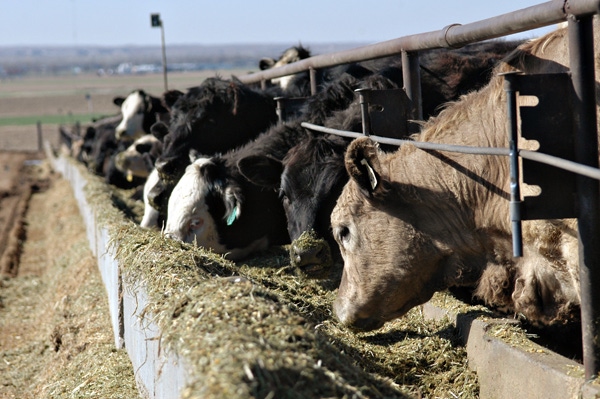Beef production is estimated to plateau at 28.32 billion pounds in 2021, then decline to 28.01 billion in 2023. What does this increase in volume mean for prices?
September 25, 2018

Increasing beef production will likely weigh on cattle prices for a couple more years, but the pressure will likely be less than it would be if it weren’t for more consumers demanding more higher-quality beef.
In the recently released Baseline Update for U.S. Agricultural Markets — projections through 2023, the Food and Agricultural Policy Institute (FAPRI) at the University of Missouri estimated the average price of a 600- to 650-pound feeder steer (basis Oklahoma City) at $158.51 per cwt this year, and then declining as low as $141.06 in 2020. After that, prices rise each year through 2023 to $162.14.
Prices for fed steers (Five Area direct) are projected at $116.59 per cwt this year, declining as low as $110.19 in 2020 and then ultimately increasing to $119.99 in 2023.
For context, FAPRI forecasts peak beef cow numbers in 2019 at 31.8 million head, just 100,000 head more than the start of this year. Then numbers continue to decline through 2023 at 30.8 million head.
Peak beef production is estimated to plateau at 28.32 billion pounds in 2021, then decline to 28.01 billion in 2023. That would still be more than next year’s estimated production of 27.92 billion pounds.
Although the update suggests continued cyclical pressure, Scott Brown, Extension agricultural economist at the University of Missouri, notes that demand for high-quality beef softens what could have been bigger price declines.
“The beef industry is more economically viable and sustainable today as a result of cattlemen intentionally improving eating satisfaction and growing demand through a focus on quality,” explained Mark McCully, vice president of production for Certified Angus Beef (CAB) at this year’s annual meeting of the Beef Improvement Federation (BIF). “Consumers have responded to higher-quality options in the marketplace, and beef continues to enjoy a significant price premium to the competing pork and chicken options.”
McCully explained that the percentage of cattle grading Choice and Prime increased from 65% in 2010 to 78% last year.
For January through August this year, on a weekly basis, fed cattle grading Choice and Prime ranged from a low of 76.8% to a high of 81.1%. That’s according to the weekly USDA National Steer and Heifer Estimated Grading Percent reports. The percentage of cattle USDA certified in the upper two-thirds of Choice (premium Choice) ranged from 28.9% to 34.9%.
Comparing 2010 to 2017, McCully explained, “Grading percentages are informative, but actual production levels [quantities] are potentially more insightful. When put on a carcass weight basis, the weekly production of USDA Prime, Premium Choice and all Choice has increased 12.1 million pounds (93%), 37.2 million pounds (73%), and 45.6 million pounds (18%), respectively. In this same time frame, the average weekly production of USDA Select decreased 49.7 million pounds (40%).”
At the same time, most measures of domestic consumer beef demand were steady to higher. Internationally, demand continues at a record pace.
For January through July this year, beef exports were 10% more than the same period a year earlier at 779,450 metric tons, according to the U.S. Meat Export Federation (USMEF). Export value was 20% more at $4.76 billion. Per head of fed slaughter, export value was up 16% to $318.31.
It’s hard to argue against elevated carcass quality — borne by genetics, management and grain finishing — being the primary competitive advantage of U.S. beef.
“The worldwide momentum for U.S. beef has rarely been as strong as it is today,” says Dan Halstrom, USMEF president and CEO. “To a large degree our mainstay Asian markets are driving this growth, but emerging markets in Asia and in the Western Hemisphere are also displaying a tremendous appetite for U.S. beef and contributing significantly to the surge in export value.”
About the Author(s)
You May Also Like





